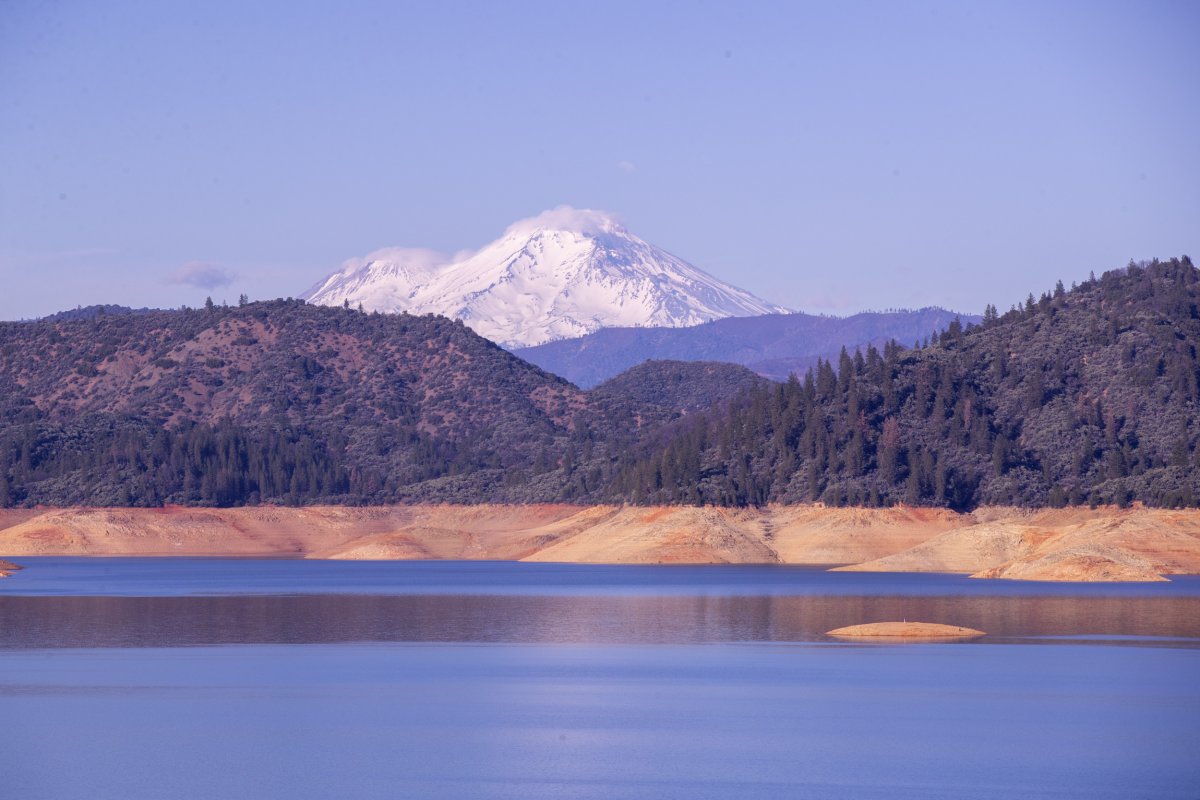Lake Shasta is only a few feet below capacity, with only weeks to go before its water levels are expected to start falling again as the season's heat grips the region.
After years of drought, several reservoirs in California reached concerningly low water levels in the summer of 2022. However, an abnormally wet winter last year alleviated much of the state's drought and replenished the lakes.
A similarly wet winter has brought a deluge of rain to the state this year, and several California cities have already received their annual allotment of rainfall. Lake Shasta, the state's largest reservoir, neared capacity last year but began declining in the summer.

This year, Lake Shasta's water levels began significantly improving in January after a series of atmospheric rivers—which bring saturated air from the tropics—supplemented the lake. It has jumped nearly 50 feet since the start of the year. As of Tuesday, its levels were at 96 percent capacity, putting it at 116 percent of its historical average.
The lake still has nearly 6 feet to rise before it reaches capacity, a level that hasn't been reached within the past five years, but water officials aren't sure if it'll hit full pool, which is the maximum lake level attained before water releases.
Michael Burke, a spokesman for the U.S. Bureau of Reclamation, said he expects the lake to reach 1,062 feet in early May, roughly 5 feet from full pool, according to the Record Searchlight newspaper in Redding, California. Last year, the lake began declining in late May as outflow increased because of agricultural irrigation, dropping roughly 50 feet before it began rising again in the fall.
However, even if the lake doesn't hit capacity, people are still awed by its significant change over the past 18 months. Californian Lisa Conroy said she visited the lake last week, according to the Record Searchlight story.
"Because she's full and she's beautiful," Conroy said. "This is a blessing. This is fantastic. This is a gift of nature, to have all this rainfall that we've had for the last two winters to refill this reservoir."
The lake is expected to continue rising as Sierra Nevada snow finishes melting through the spring. The snow, which provides 30 percent of California's water supply, began melting this month.
Reservoirs are in a much-improved condition elsewhere in the state. Cachuma Lake and Lake Casitas in Southern California are both at capacity. Lake Oroville, New Bullards Bar Reservoir and Lake Camanche are all over 90 percent of capacity.
Officials even had to conduct voluntary water releases at Lake Oroville earlier this winter after levels neared capacity following several moisture-laden storms.
Uncommon Knowledge
Newsweek is committed to challenging conventional wisdom and finding connections in the search for common ground.
Newsweek is committed to challenging conventional wisdom and finding connections in the search for common ground.
About the writer
Anna Skinner is a Newsweek senior reporter based in Indianapolis. Her focus is reporting on the climate, environment and weather ... Read more
To read how Newsweek uses AI as a newsroom tool, Click here.








